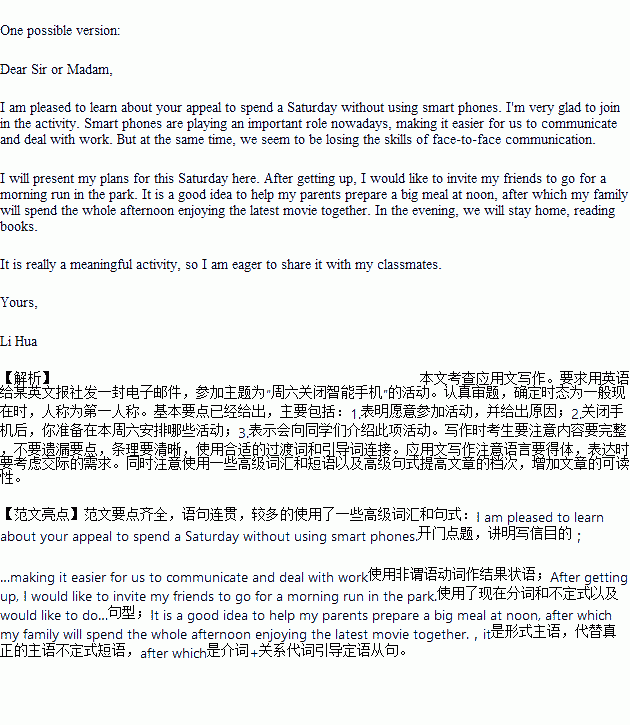题目内容
假如你是李华。某英文报社正在举行主题为“周六关闭智能手机”的活动,你很感兴趣。请你用英文给此报社发一封电子邮件,内容包括:
1.表明愿意参加活动,并给出原因;
2.关闭手机后,你准备在本周六安排哪些活动;
3.表示会向同学们介绍此项活动。
注意:
1.词数100左右;
2.可以适当增加细节,以使行文连贯;
3.开头和结尾已为你写好,不计入总词数。
Dear Sir/Madam,
I am pleased to learn about your appeal to spend a Saturday without using smart phones.
Yours,
Li Hua
练习册系列答案
相关题目


 e book will have an adventure, traveling far and wide with each new reader who finds it.
e book will have an adventure, traveling far and wide with each new reader who finds it.